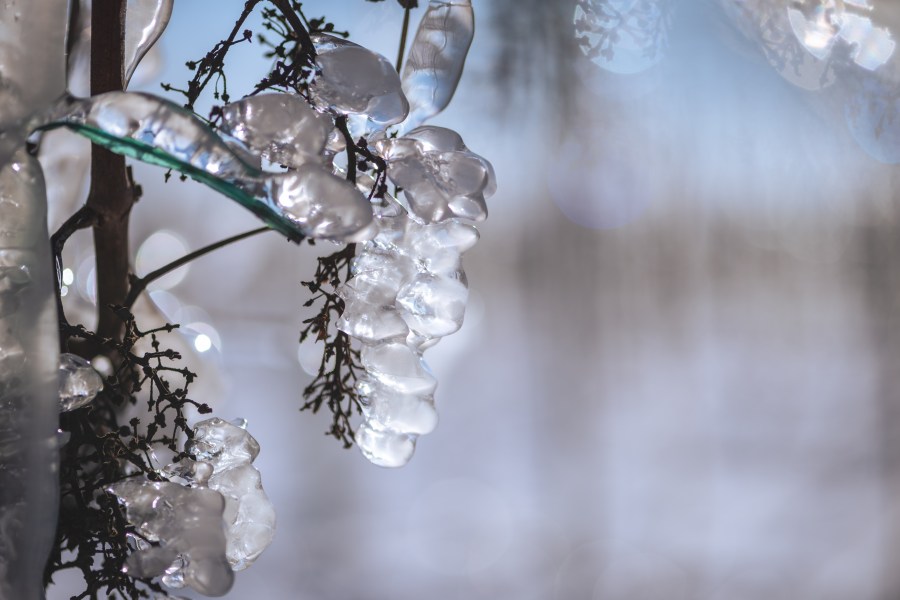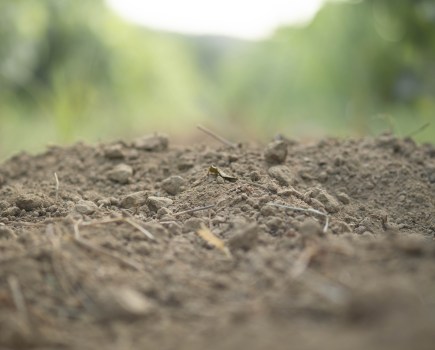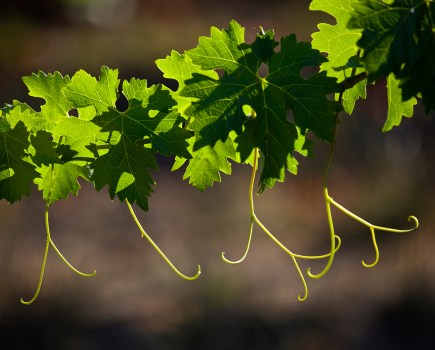Late frost is a perennial risk to vineyards, and one that, ironically, may be being made worse by the changing climate, writes Will Robinson an agronomist with Hutchinsons.
There is little doubt that UK weather patterns are becoming more erratic, with winters generally becoming milder and wetter, and summer heatwaves increasingly extreme. Although hard winter frosts are less common, we are finding the frost risk period can extend much later than it used to.
Traditionally, mid-May was often regarded as the cut-off for frost risk, but that is not the case anymore; frosts in late May, or even into the start of June are possible. Last year was a case in point, when the warmest May on record, was followed by a cold blast of Arctic air in early June.
The risk from late frost is obviously made worse when mild winter conditions lead to early bud burst. Once vines have green tissue, any temperatures below freezing will start to damage young shoots as cells freeze and tissue dies. The extent of damage depends on the growth stage at the time, with some research suggesting that vines at bud burst will suffer 50% losses at -2.2°C, however by the four-leaf stage, the temperature only has to drop to -1.1°C to result in the same level of damage.
New sites beware
While experienced vineyard managers will be well aware of the frost-prone areas and how to protect them, the potential risks may not be quite as well identified on some newly planted sites.
Last year’s high disease pressure clearly highlighted some vineyards where the land is perhaps not ideally suited to grape growing. One reason is often linked to poor airflow around the site, which increases both disease and frost risk.
Problems may occur, for example, where growers have planted on a slope, but have not cut out any frost drains in the hedge at the bottom of the slope, to allow cold air to move away. It is a very simple action that makes a big difference, especially if there is running water at the bottom to help draw cold air away.
Frost moves very slowly, but as long as it is moving, air will be mixing. Anything that causes frost to slow down and bank up, increases the risk of damage.
It is why it is best to plant vines up and down the slope rather than across it, to allow cold air to move freely down the alleyways. Similarly, tightly mowing the vegetation between rows and keeping the undervine area weed-free and uncultivated will further improve airflow.
It is also important to recognise that mounds of compost in the undervine strip and even cultivated earth can also slow down frost drainage, so a herbicide strip is generally best, maintained with glyphosate on vines over four years old, or carfentrazone-ethyl on younger vines.
Other options to manage risk
Aside from employing frost mitigation measures such as bougies (candles), or mechanical heaters/fans, there are some other steps growers can take to reduce the potential frost impact, although none offers complete protection against more severe late frosts.
- Delaying tying down canes – metal wire conducts cold, therefore buds touching the wire are likely to get frosted first. Avoid this by delaying tying down
- Leave sacrificial canes – leaving extra canes upright provides some replacements for any canes that were tied down and damaged by frost. ‘Highpoint principle’ also means that buds at the top of upright sacrificial canes will burst first, so by pruning those out, it can delay bud burst in the others and therefore reduce the risk of them being damaged by late frost. This extra pruning is however, very labour intensive
- Boost natural frost tolerance by increasing the concentration of sugars and salts within buds. This can be done with a biostimulant feed such as Maxicrop, or Lalstim Osmo. The latter is the purest form (96%) of glycine-betaine available. This osmoprotectant increases cold tolerance, reducing the percentage of tissue that dies during frost episodes, and promoting better recovery of cold-injured plants. The best effect is achieved from application 72-36 hours before the event, but there is no panacea – if the frost is really severe in terms of depth or duration, tissue death is the most likely outcome, unfortunately.
- Reduce ice-nucleating bacteria on green vegetation and woody material
- Monitor frost risk closely to avoid getting caught out – Omnia features a 10-day frost risk forecast and email notifications.




